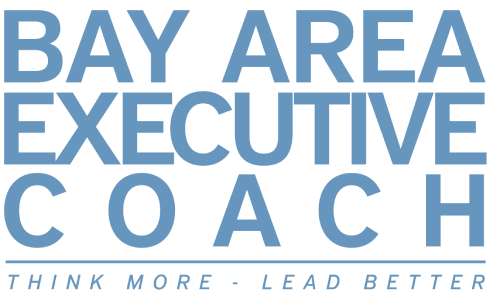Strategic planning is important in every organization at any time. However, at this present time, it’s more important than ever. Firms that don’t have a solid plan for the next 12 – 18 months will not come through this challenging period with clarity of purpose and direction. The lack of a good plan that the entire organization can get behind could prove fatal for some firms.
A good strategic planning process includes three components. If your company skips or fails to execute well any one of these components, it is unlikely to get strong results from a strategic plan.
How bad can it be? There are serious costs associated with an incomplete planning process:
- Erosion of leadership in the market and a sense of falling behind.
- Failure to achieve desired financial and operational results.
- Frustration throughout the organization and the perception that strategic planning is a waste of time.
- Loss of credibility of the leadership team.
- Misdirection of firm’s vital remaining resources resulting in the firm’s demise.
You need to get this right. Especially now. Here are the three elements of a sound strategic planning process:
One: Answer the “big” strategic planning questions. The big questions include: Who are our customers and how can we better serve them? Who are our competitors and how can we beat them? What do we do best and how can we build on that core strength? How can we prepare the organization to defend against threats and seize opportunities? Yes, there actually are opportunities, even now. What are potential scenarios that we need to consider for the future, and how will we prepare for them?
Unfortunately, many organizations debate these issues with academic discussions that endlessly lead to more and more data queries. On the other hand, some organizations come up with brilliant answers to these questions but can’t quite take them to the point of clear initiatives that get done.
 The big strategic planning questions are worthless if they don’t result in a few clear, compelling strategic initiatives to strengthen the organization.
The big strategic planning questions are worthless if they don’t result in a few clear, compelling strategic initiatives to strengthen the organization.
Two: Establish a short list of clear priorities and an overall strategic theme. The most important outcome of the first part of the strategic planning process is to identify the most important priorities for the organization. Starting with a list of potential priorities, pointed and purposeful discussions determine the relative value of each, then hones in on only a few key priorities. This discussion can also lead to greater clarity about the big strategic planning questions, especially about what the organization should do best.
Once a list of three to five priorities is agreed upon, the organization can discover a unifying strategic theme. This works best as a one-line statement that conveys the overall strategic push for the organization. Examples could include: “Beat our #1 competitor!” “Expand to China.” “0% medical errors.” “Become a magnet for talent.”
When this step goes awry, organizations settle for a long list of priorities. This has the benefit that nobody feels excluded or insulted. But the downside is it will be highly unlikely that the organization will get any of the initiatives done completely.
Three: Implement. The biggest complaint we hear about strategy is that it never seems to get fully executed. There are a few reasons why this tends to happen in organizations large and small:
- Neglecting to commit essential resources to the strategy, including capital, training, technology, and people.

- Failing to take things off the plate of busy employees, and instead just stacking more work on them.
- Having lack of will to stop old initiatives that compete with the new.
- Not setting clear roles, responsibilities, accountability, and rewards systems.
- Giving up after a few setbacks or initial resistance.
Sound familiar? This doesn’t have to be the case with your company! A sound strategic planning process invests as much time on implementation planning as it does on the more interesting work of answering the key strategic questions and setting priorities.
Now, a tough but necessary question. Which of the above areas is weakest in your organization? Some organizations are strong at asking the big picture questions but fail to follow up. Some set too many priorities and can’t say “no” to good ideas. Others are strong at executing but lack the vision to develop compelling strategic initiatives.
If you’re not sure you can execute a sound strategic planning process without able guidance and support, we can help. We have a proven 3-part strategic planning process that is simple for you to implement and gets results efficiently.
To learn more, complete a self-evaluation of your firm’s grasp (just below) on strategic planning or contact us to have a no obligation conversation about how we can lead your firm through our proven process.
Is Strategic Planning a solid process in your company?
Take this quick assessment to find out whether strategic planning in your organization is as stress free and effective as it should be. Please note you can select the right number for you for each statement but you cannot submit or compile your answers. It’s just to give you a clear idea of where your firm stands on a strategic planning process now.
Please note the assessment below is not interactive. It is just a visual example of what you can download and complete.
| Rate how well you agree with the following statements
(1 = not at all; 2 = not very much; 3 = neutral; 4 = somewhat; 5 = Absolutely!) |
1 | 2 | 3 | 4 | 5 |
| We have developed a common language that defines the strategic planning process. | |||||
| Our strategic planning process is free from jargon or academic theory. It is focused on simple, practical ways to compete and thrive. | |||||
| We cover the big picture strategic questions about our products and services, customers, competition, and overall environment. | |||||
| We are 100% clear about what we do best and how we set ourselves apart. | |||||
| Our strategic planning process is efficient. | |||||
| Our strategic planning process results in a clear set of no more than three priorities to help us continue to be competitive in our market. | |||||
| Our strategic planning process results in an overall theme that everyone in the organization understands and rallies to achieve. | |||||
| When we create a strategic plan, we include clear accountability for each initiative, including metrics for success and ongoing tracking. | |||||
| When we create a strategic plan, we evaluate the work we are currently doing, so that we can make room for new priorities. | |||||
| Our strategic planning process is also an opportunity for our organization to identify and help develop future leaders. | |||||
| We have the confidence and trust that our own people know the answers to our strategic issues – and we have a process that involves their knowledge and expertise. |
________________________________________
If you answered any of the above statements with a 3 or less, we should talk. We have a comprehensive 3-part strategic planning process that is efficient and leads to results. It is efficient, non-invasive, and gives you peace of mind that you are covering all of the issues for ongoing success. This assessment was provided to us by ATN Associates, LLC.
As your strategic planning skills increase, you will undoubtedly turn to workforce optimization. Assessments can help! Read our article The Use of Software for Talent Management and Selection is Growing.
Featured photo sourced from Pexels which can be found here and secondary photo also sourced from Pexels can be found here.










